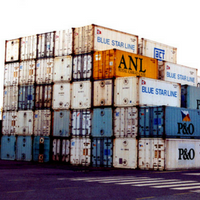Letter of Credit – financing international trade
| 19-04-2018 | treasuryXL |

When a buyer and seller agree to enter into a transaction that is cross border, one of the most used instruments to facilitate this transaction is a documentary letter of credit (LC). This is an international recognised and accepted method that is governed by the rules and regulations of the International Chamber of Commerce. LCs are mainly used for international transactions, where the seller requires additional security and also where the law in 2 deferent jurisdictions are not the same. However, protection is also given to the buyer. Here is a quick guideline to how this instrument works.
Deal
A buyer and seller agree to a trade and, invariably due to the distance between them, the different laws, and the fact that they may have no previous trading relationship, the trade will take place under a LC. Upon agreeing the trade, the buyer will contact his bank and ask them to issue a LC (Issuing Bank). As the bank will provide a guarantee role in this transaction, they first need to ascertain if the buyer has sufficient funding to settle the transaction.
The letter of credit is then sent to the seller’s bank (Advising Bank). Within this document the terms and conditions of the shipment are detailed. The issuing bank lets the seller know what documents are needed to accept the import, together with such items as the latest shipment date.
The seller will arrange for the necessary documentation and shipment. Then they will approach their bank and present them will the documents and the LC. This is all sent to the Issuing Bank who then checks that the documentation meets the terms contained within the LC.
Upon approval by the Issung Bank the following steps take place:
- Account of the importer is debited
- Documents are released to the importer so that they can claim the goods
- Payment is made as per the instructions of the Advising bank
- Advising Bank credit the account of the seller
As the issuing bank has issued a guarantee, the in the event that all the documentation meets the criteria agreed upon, then they are obligated to make payment to the seller.
It is of course possible that there are discrepancies between the LC and the documents delivered. As the documents are delivered by the seller to their bank (Advising Bank), it is they who have the first task of checking everything. If discrepancies arise, the advising bank will endeavour to ensure that the documents amended. If the discrepancy can not be amended within the agreed time frame, then the documents will be forwarded to the Issuing Bank “in trust”. Sending documents in this way removes the guarantee on the original letter of credit, so caution is necessary. It is possible that despite the discrepancies, the buyer is still prepared to accept the shipment.
The list of necessary documents includes, but is not limited to:
- Bill of exchange
- Bill of lading or airway bill
- Invoice
- Cargo packing list
- Certificates certifying to authenticity, inspection, origin
- Insurance policy
Despite the guarantee from the Issuing Bank, there are always risks – default by any of the parties, legal risks, acts of war, documents not arriving on time etc. A letter of credit specifically deals with the documentation and not the goods itself.
This is one of the oldest and most trusted methods for arranging trade finance, and given the complexity with all the documents and the time it can take to cross the world, this is an area of banking that is very keen to explore the advantages offered by the Blockchain to accelerate the whole process.
If you have any questions, please feel free to contact us.









